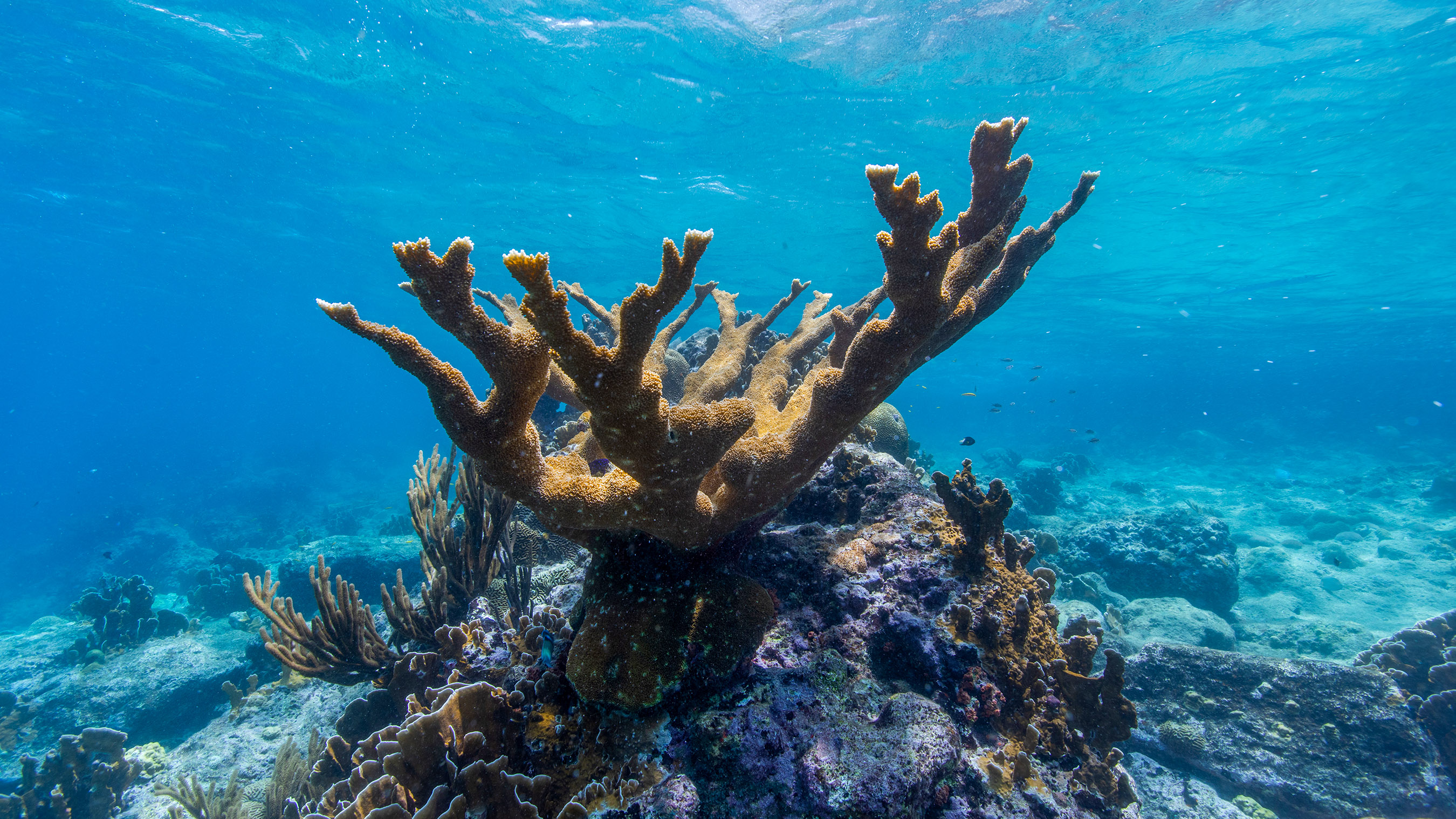The race is on to save coral reefs—by freezing them
Recent advances in cryopreservation are a lifeline for rapidly vanishing reefs.

As sweltering ocean temperatures make graveyards of coral reefs across the Caribbean and beyond, a team of scientists is scrambling to cool corals down. Way down. To -200 °C.
The Coral Biobank Alliance, helmed in part by Smithsonian Conservation Biology Institute biologist Mary Hagedorn, aims to cryopreserve or otherwise keep in captivity the roughly 1,000 species of reef-building corals on the planet. Coral reefs, as an ecosystem, are expected to go functionally extinct by 2035. Hagedorn hopes to freeze enough coral sperm, larvae, and adult polyps not just to support current conservation efforts—such as breeding heat-resistant corals—but to reboot reefs in the increasingly likely event of a marine mass extinction. Yet major engineering hurdles have stood in the way of this plan.
Ice is perhaps the chief enemy of successful cryopreservation. “Ice is a crystal,” says Matthew Powell-Palm, a thermodynamicist at Texas A&M University. “What we want instead is to get the water inside the coral tissue to form a glass.” At a molecular level, he explains, glass is akin to a solidified liquid, with none of the jagged crystals that can rip apart delicate tissues. To stave off ice formation, samples are doused in a glass-promoting, cryoprotective solution and then rapidly cooled. A separate process is needed for the coral’s symbiotic algae. And any techniques must be developed with an eye to the limited technological capacities of remote field stations in places such as Australia or Indonesia.
Thawing is its own challenge. Corals are sickly and infection-prone in the first days and weeks after they are thawed, so the team is developing a cocktail of antibiotics, probiotics, and antioxidants to boost survival rates. “Think of a patient who’s just had open-heart surgery,” Hagedorn says. “They’re not going to walk out the door the next day.”
The difficulty of cryopreservation grows with the size, complexity, and fat content of the tissue. Sperm are relatively simple, Hagedorn says, while eggs, which are fatty, are viable for only a few hours, making them “just too hard to preserve.” To prevent extinctions, there need to be easy-to-use methods to freeze larvae—the immature, free-swimming form corals take early in their life cycle—along with fragments from mature colonies.
Hagedorn and her collaborators have been able to cryopreserve larvae since 2018, but the process was finicky, and thawing them required sophisticated lasers to heat them at a rate of more than 1,000,000 °C per minute. Now, Hagedorn’s team has devised and tested a simplified method. The larvae are dehydrated on a steel mesh, immersed in a cryoprotectant, and plunged into liquid nitrogen. To thaw them, the mesh is put in a room-temperature rehydration solution. If all goes well, the larvae swim off within two hours. “That’s been a huge advancement,” Hagedorn says. “And what that means is that we can stop the extinction of species, and in a way that’s very user-friendly.”
There has also been progress preserving adult corals. In August, Powell-Palm, Hagedorn, and others announced that they had seen cryopreserved adult specimens survive one or two days before falling prey to bacteria. The process they used, called isochoric vitrification, employs a small, confined chamber to prevent liquids from expanding into ice. “I always describe it as low tech, high science,” Powell-Palm says. “The thermodynamic processes at play within the chamber are wonderfully complex ... but technologically, it’s unbelievably simple.”
If—and Hagedorn emphasizes the if—isochoric vitrification is perfected, it would be a game changer. Rather than requiring researchers to wait for the few nights a year that corals spawn to catch their sperm and larvae, this method will allow them to collect and cryopreserve corals whenever it’s convenient. Thawed fragments would grow into larger colonies and one day spawn as well, helping to restart dead or struggling reefs.
The most intractable problem, however, might be time. As high temperatures, acidic water, pollution, and disease batter corals, they may grow too sickly to withstand the stresses of cryopreservation. Corals need to be collected as soon as possible, Hagedorn says, while their health is still mostly intact.
At the same time, she’s planning for a conservation program that may last for decades—even centuries, because the oceans may continue to warm for many generations, even in the event of decisive climate action. Hagedorn is investigating the feasibility of storing coral and other animal tissues on permanently cool parts of the moon. If some disaster were to befall coral repositories on Earth, samples tucked in lunar lava tubes or shady craters could persist for centuries.
Allison Guy reports on health and the environment.
Deep Dive
Climate change and energy
The problem with plug-in hybrids? Their drivers.
Plug-in hybrids are often sold as a transition to EVs, but new data from Europe shows we’re still underestimating the emissions they produce.
Harvard has halted its long-planned atmospheric geoengineering experiment
The decision follows years of controversy and the departure of one of the program’s key researchers.
Decarbonizing production of energy is a quick win
Clean technologies, including carbon management platforms, enable the global energy industry to play a crucial role in the transition to net zero.
The hard lessons of Harvard’s failed geoengineering experiment
Some observers argue the end of SCoPEx should mark the end of such proposals. Others say any future experiments should proceed in markedly different ways.
Stay connected
Get the latest updates from
MIT Technology Review
Discover special offers, top stories, upcoming events, and more.